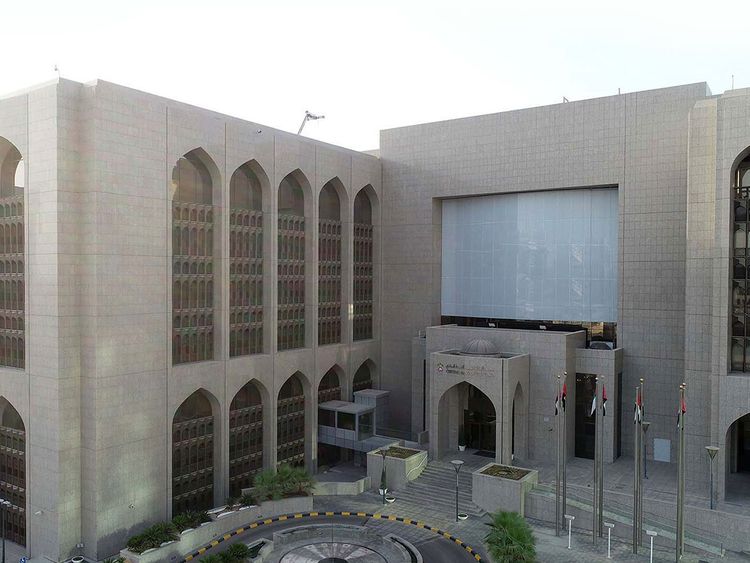
Abu Dhabi: GDP growth in the UAE jumped to 3.8 percent in 2021, the UAE Central Bank said on Monday, while non-oil GDP growth rose to 5.3 percent in 2021.
Releasing its annual report for 2021, the regulator said the country has begun to flourish again as a result of its successful strategy in containing the health and economic impact of the COVID-19 pandemic.
For 2022, the Central Bank revised its projections to 5.4 percent of overall real GDP growth, with the non-oil real GDP expected to increase by 4.3 percent, owing to sustained public spending, a positive outlook for credit growth, higher employment, and better business sentiment, in addition to the positive spillover from the Fifa World Cup 2022 in Qatar.
Meanwhile, real oil GDP growth is projected to reach 8 percent, owing to the expected recovery in global demand, the pickup in transportation and travel, and the increase in production of OPEC+ members, as a result of sanctions on Russia.
The current account surplus in the balance of payments increased from Dh77.5 billion in 2020 to Dh176.2 billion in 2021, as a result of the increase in oil and non-oil exports, in addition to a rise in the surplus in the balance of services.
“The resilience characterizing the UAE’s banking and insurance sectors played a prominent role in defining a benchmark for dealing effectively with future crises, without compromising the principles of sound risk management,” said Sheikh Mansour bin Zayed Al Nahyan, Deputy Prime Minister and Minister of Presidential Affairs, and chairman of the board of directors of the UAE Central Bank.
“The International Monetary Fund noted our nation’s unique ability to face the repercussions of COVID-19 in its Annual Report for 2021, which praised the UAE for its strong and proactive response to the pandemic’s effects. The report noted that the UAE has managed to continue implementation of its policies aimed at supporting economic growth.”
Khaled Mohamed Balama, the Central Bank governor, said the UAE’s banking system is well capitalized and has the strength to support the country’s growth agenda.
“Bottom-up stress tests to explore potential banking sector vulnerabilities showed that the UAE’s financial system is resilient and capable of withstanding the various scenarios while maintaining adequate capital and liquidity levels. The CBUAE also rebalanced its pandemic-related stimulus program, the Targeted Economic Support Scheme (TESS), replacing measures designed to ease retail, corporate, and banking pressures with more focused initiatives to support the recovery.”
Surging trade
Data available up to September 2021 shows that the total value of UAE trade (non-oil exports, re-exports, and total imports) stood at Dh1.29 trillion, with the main non-oil export partners being India, Saudi Arabia, Switzerland, and Hong Kong.
Hydrocarbon exports increased by 41.1 percent in 2021 because of the increase in the price of crude oil and other products. Non-hydrocarbon exports rose by 5.2 per cent, reaching Dh415.0 billion or 27.8 percent of GDP, while re-exports rose by 15.3 per cent.
Travel boost
With travel easing globally and supply chain disruptions easing out, the UAE saw a boost in its travel and transportation segments. Travel and transport represented together 72.8 percent of inflows and 46.1 percent of outflows to the balance of services. In 2021, travel recorded a net inflow of Dh40.2 billion, while transport recorded a net inflow of Dh45.1 billion.
Tourism and hospitality picked up in the UAE as lockdowns eased and confidence in health safety rules improved. Available data for Dubai show a recovery in hotel occupancy from an average of 54 percent in 2020 to 67 percent in 2021, which remains below pre-pandemic levels.
Corresponding to the current account surplus, the financial account deficit decreased slightly to Dh96.8 billion. The financial outflows during 2021 were mainly conducted by banks’ investments in securities and other private and public sector entities.
FDI growth
Despite the unfavorable international environment, inward FDI to the UAE increased by 4.1 percent in 2021 to Dh75.9 billion. Outward personal remittances increased by 11.4 per cent, or Dh17.8 billion in 2021, reaching Dh174.6 billion. The top two countries for outward personal remittances were India and Pakistan accounting for 28 percent and 11.9 percent, respectively. Personal remittances declined in 2021 by 15.3 percent in India, while they increased by 3 per cent in Pakistan.
Revenue and expenditure
Government revenues increased year-on-year in the first nine months of 2021 by 17.4 percent to Dh334.6 billion because of an increase in taxes and other revenues, the Central Bank said in its report.
Current expenditure rose by 9.8 percent year-on-year in Q1-Q3 2021, standing at Dh257 billion, in contrast to a decline of 20.1 percent during the same period of the previous year. The increase in expenses can be attributed to higher spending on goods and services. Meanwhile, capital spending, measured by the net acquisition of non-financial assets, decreased by 59.9 percent (y-o-y) in the year-to-September 2021, reaching Dh13.6 billion.
The consolidated fiscal balance recorded a surplus of Dh64 billion, compared to Dh17.1 billion during the same period in 2020.
Bank deposits grow
Total bank deposits increased by 5.9 percent year on year while resident deposits (88.4 percent of total deposits) increased by 5 percent in 2021, owing mainly to an increase in private sector deposits by 8.3 percent, while non-resident deposits (11.6 percent of total deposits) increased by 14.1 percent.
The number of licensed commercial banks in the UAE was 59 at the end of 2021, of which 22 were national banks and 37 foreign banks (including 10 wholesale banks). Moreover, due to increased digitalization, the number of national banks’ branches fell by 28 to reach 513 at the end of 2021. The number of employees at banks operating in the UAE rose marginally by 47 in 2021 to reach 33,491 employees.
Source: UAE GDP grows 3.8% in 2021, to reach 5.4% in 2022: Central Bank | Business – Gulf News
